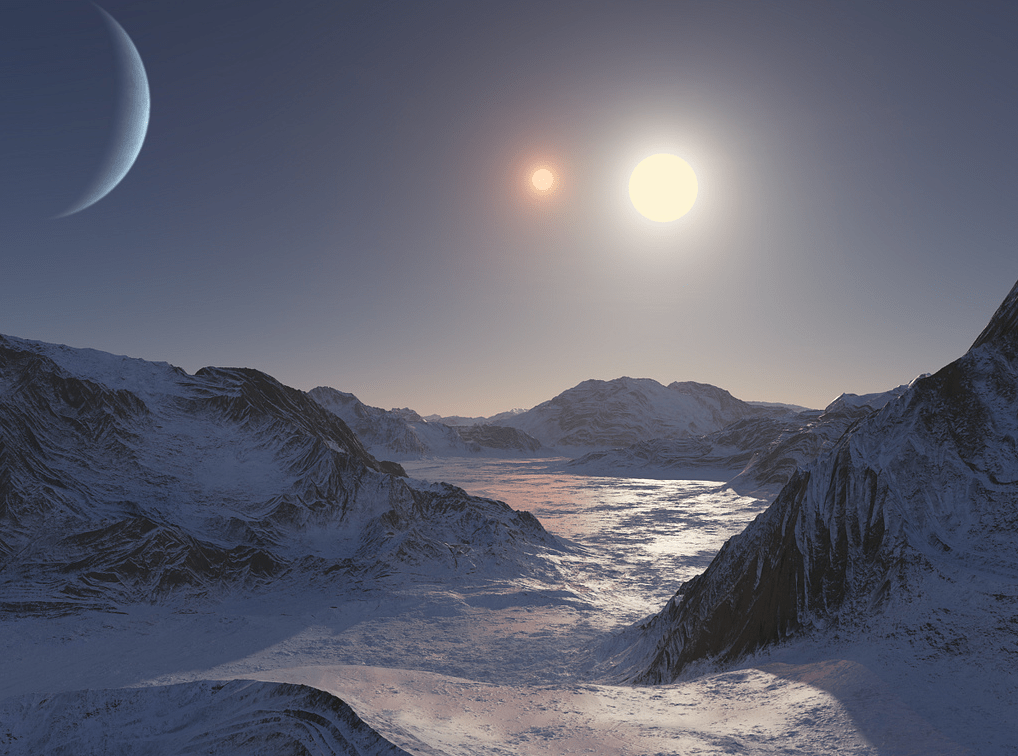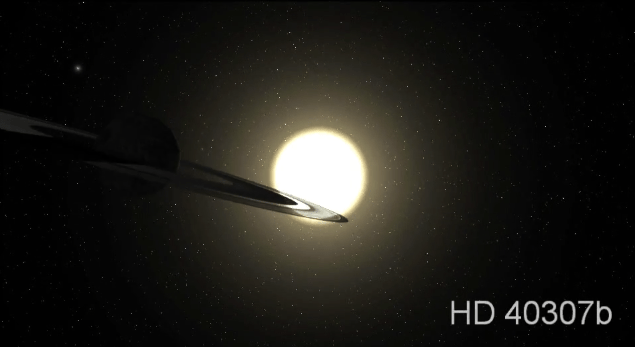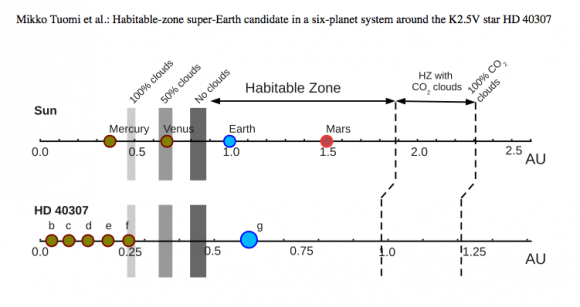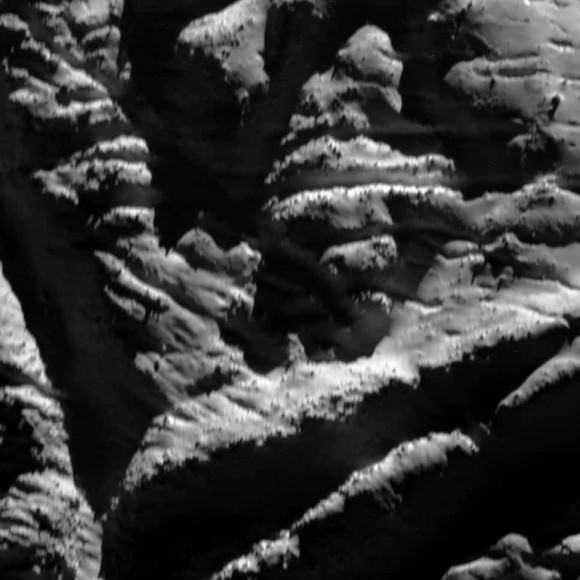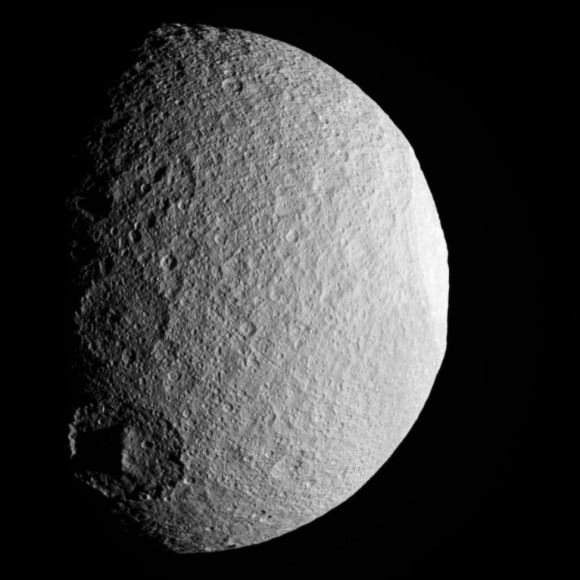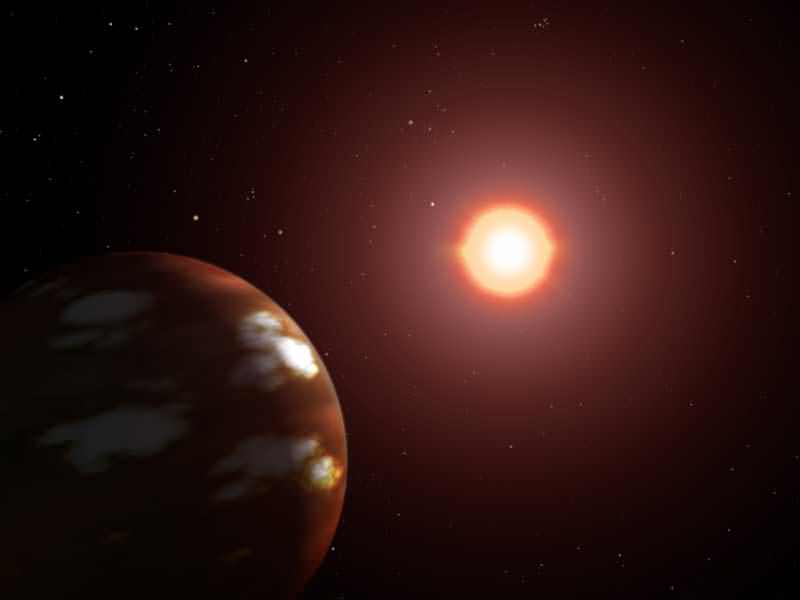A view of Kepler 47c and binary stars. ©Digital Drew. All rights reserved.
What would it look like on a hypothetical icy moon orbiting the exoplanet Kepler 47c? Perhaps something like this.
This is an illustration by an artist who goes by the name Digital Drew on Flickr. Drew creates landscapes of imagined alien worlds orbiting stars (and sometimes planets) that actually exist in the Universe. With 3D software, a little science and a lot of imagination, Drew shows us what skies might look like on other planets.
Kepler 47c (KOI-3154.02) is a Neptune-sized exoplanet orbiting a binary star pair 4,600 light-years away. It is part of the first circumbinary system ever discovered — one of at least two planets orbiting a pair of stars. In the image here, Kepler 47c is seen at upper left.
 What makes this exoplanet so exciting is that it is within the habitable zone around the stellar pair. So even though the planet itself may be a gas giant and thus not particularly suitable for life, any moons it has in orbit just might be.
What makes this exoplanet so exciting is that it is within the habitable zone around the stellar pair. So even though the planet itself may be a gas giant and thus not particularly suitable for life, any moons it has in orbit just might be.
While its slightly smaller planetary companion Kepler 47b orbits much too closely to the twin suns for water to exist as a liquid, 47c’s orbit is much farther out, completing one revolution every 303 days. Mainly illuminated by a star like our Sun but about 15% dimmer, this is a region where you could very well find a large rocky moon with conditions similar to Earth’s.
Fly a spacecraft over its higher elevations and you just might see a scene like this, a double sunset over a glacier-filled valley with a crescent gas giant dominating the sky. (Makes one wonder what the balmier regions might look like!)
“Unlike our sun, many stars are part of multiple-star systems where two or more stars orbit one another. The question always has been — do they have planets and planetary systems? This Kepler discovery proves that they do. In our search for habitable planets, we have found more opportunities for life to exist.”
– William Borucki, Kepler mission principal investigator (Sept. 2012)
And as more giant planets are discovered within their system’s habitable zones, the more there’s a chance that habitable moons could exist — or perhaps even be more common than habitable planets! Just recently the citizen science project Planet Hunters announced the potential exoplanet PH2 b, a Jupiter-sized world that orbits within a habitable zone. In our Solar System Jupiter has lots of moons; PH2 b could very well have a large number of moons of its own, any number of them with liquid water on their surfaces and temperatures “just right” for life.
Read more: Exciting Potential for Habitable Exomoons
While it will likely be quite some time before we see any direct observations of an actual exomoon, and possibly never from one, we must rely on the work of artists like Digital Drew to illustrate the many possibilities that exist.
See more of Drew’s work on his Flickr page here, and read more about the discovery of the Kepler 47 system here.
Inset image: Diagram of the Kepler 47 system compared to the inner Solar System. Credit: NASA/JPL-Caltech/T. Pyle.

